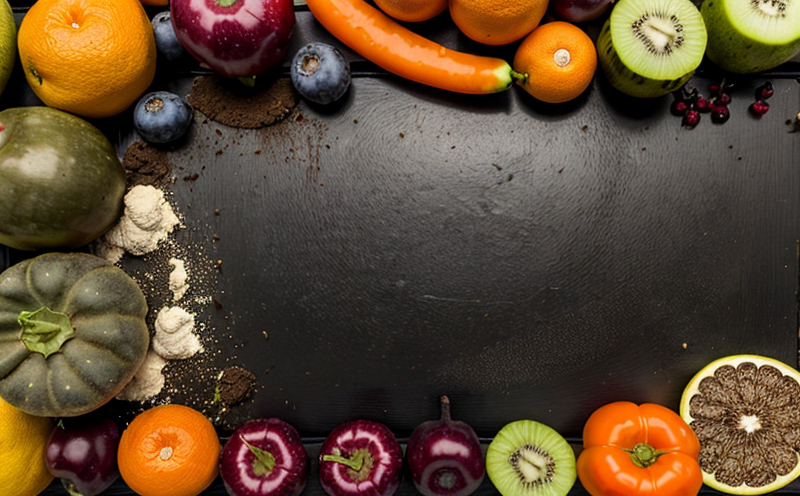EN 14130 Color Measurement in Fruit and Vegetable Products
The European Standard EN 14130 provides a harmonized approach to measuring color parameters of fruit and vegetable products. This method is essential for quality assurance, ensuring that the visual characteristics of these products meet specific standards set by regulatory bodies.
Color measurement in fruits and vegetables plays a crucial role in several sectors including food manufacturing, retail, and agriculture. It helps in maintaining product consistency, ensuring consumer satisfaction, and facilitating fair trade practices. Compliance with EN 14130 is vital for companies that wish to ensure their products meet the high standards set by international bodies such as the European Committee for Standardization (CEN).
The standard outlines a detailed procedure for measuring color using a spectrophotometer or similar instrument. It specifies the angles of measurement, the type of illuminant, and the observer's color space settings to ensure consistent results across different laboratories.
During specimen preparation, it is important to consider factors such as temperature, humidity, and storage time, which can affect the final color readings. The standard recommends that samples should be prepared in a controlled environment to minimize variability.
The measurement process involves placing the fruit or vegetable sample into the spectrophotometer and recording the L*, a*, b* values for each product. These values represent lightness, green-to-red axis, and blue-to-yellow axis respectively. Reporting these results allows producers to make informed decisions about their products' appearance.
In the context of food manufacturing, color measurement ensures that products meet aesthetic expectations set by consumers. In retail settings, it helps maintain brand consistency across different batches or suppliers. For agricultural purposes, accurate color measurements aid in selecting optimal harvesting times based on ripeness levels.
Adherence to EN 14130 also supports traceability throughout the supply chain. By maintaining consistent color standards, stakeholders can better manage inventory and production schedules. This reduces waste and improves overall efficiency within the industry.
To summarize, the application of EN 14130 in fruit and vegetable products provides a reliable means for assessing color quality. Its implementation enhances product uniformity, supports regulatory compliance, and contributes to improved customer satisfaction across various sectors.
Industry Applications
EN 14130 is widely used in the food manufacturing industry where it aids in maintaining consistent product appearance. Retailers rely on this standard when displaying produce in their stores, ensuring that fruits and vegetables look appealing to customers. Agricultural producers use color measurement data to determine ideal harvesting times based on ripeness.
- Food manufacturers ensure uniformity across batches of processed products by adhering to EN 14130.
- Retailers enhance customer experience by presenting fresh produce that meets aesthetic expectations.
- Agricultural producers optimize harvest schedules using color measurement as an indicator of ripeness.
These applications demonstrate how the standard contributes to quality control and consumer satisfaction within the food sector. By providing precise and consistent measurements, EN 14130 facilitates better decision-making throughout the supply chain.





